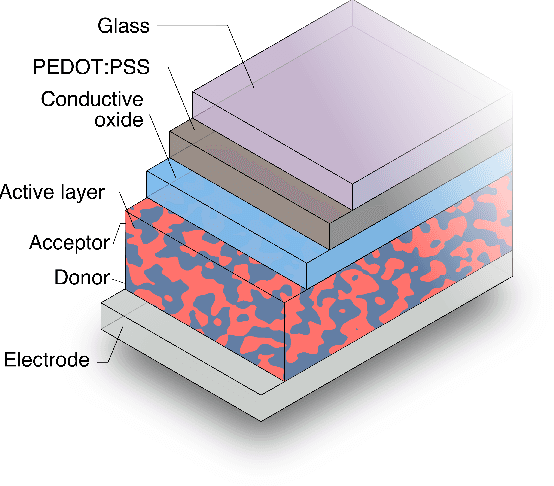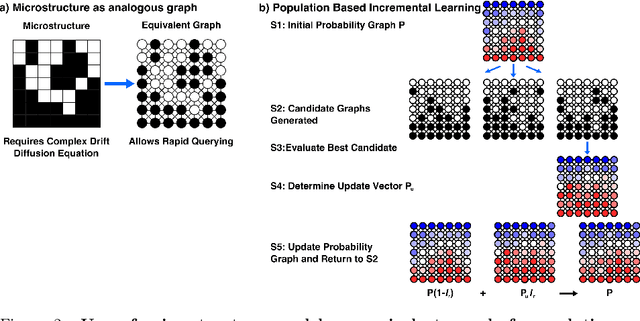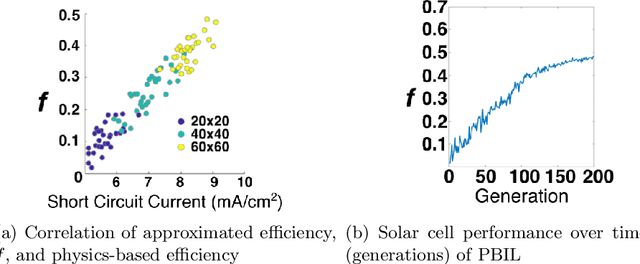Computational design of organic solar cell active layer through genetic algorithm
Paper and Code
Oct 28, 2019



The active layer microstructure of organic solar cells is critical to efficiency. By studying the photovoltaic properties of organic solar cell's microstructure, it is possible to increase the efficiency of the solar cell. A graph-based microstructure model was employed to approximate the efficiency, measured as short circuit current, of a solar cell given a microstructure. Through probabilistic graph-based optimization, a class of microstructures were found with an efficiency surpassing that of more conventional morphologies. These optimized solar cells surpass the efficiency of more conventional photovoltaic devices as they better facilitate charge transport, generation, and dissociation. A device was designed with a 40.29% increase in short circuit current from the solar cells with the currently believed optimal morphology. The designed morphologies feature two dendritic clusters of the donor material poly(3-hexylthiophene-2,5-diyl) (P3HT) and the acceptor material phenyl-C61-Butyric-Acid-Methyl Ester (PCBM). The designed microstructure's increase in performance contrasts with more conventional structures featuring interdigitated or bilayer strands of P3HT and PCBM. The change of microstructure morphology through graph-based evolution obtains an organic solar cell with an efficiency significantly greater than conventional organic solar cells, proves the validity of graph-based microstructure models for simulation in materials science, and advances the vision of an inexpensive, efficient form of renewable energy.
 Add to Chrome
Add to Chrome Add to Firefox
Add to Firefox Add to Edge
Add to Edge